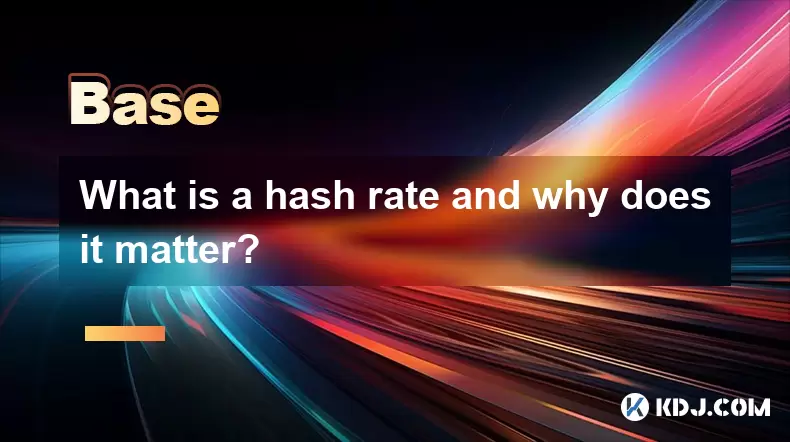-
 Bitcoin
Bitcoin $118100
0.44% -
 Ethereum
Ethereum $3765
5.84% -
 XRP
XRP $3.498
3.12% -
 Tether USDt
Tether USDt $1.000
0.00% -
 BNB
BNB $753.2
3.41% -
 Solana
Solana $181.7
3.58% -
 USDC
USDC $0.9999
0.01% -
 Dogecoin
Dogecoin $0.2704
12.75% -
 Cardano
Cardano $0.8684
5.85% -
 TRON
TRON $0.3151
-0.86% -
 Hyperliquid
Hyperliquid $46.06
4.51% -
 Stellar
Stellar $0.4695
2.48% -
 Sui
Sui $3.910
3.18% -
 Chainlink
Chainlink $19.36
6.65% -
 Hedera
Hedera $0.2750
3.99% -
 Bitcoin Cash
Bitcoin Cash $544.6
6.31% -
 Avalanche
Avalanche $25.12
3.69% -
 Shiba Inu
Shiba Inu $0.00001559
5.40% -
 Litecoin
Litecoin $116.8
5.10% -
 UNUS SED LEO
UNUS SED LEO $8.991
0.05% -
 Toncoin
Toncoin $3.283
2.79% -
 Polkadot
Polkadot $4.509
3.97% -
 Uniswap
Uniswap $10.67
6.58% -
 Ethena USDe
Ethena USDe $1.001
-0.01% -
 Monero
Monero $323.2
0.48% -
 Pepe
Pepe $0.00001410
6.37% -
 Bitget Token
Bitget Token $4.964
1.93% -
 Dai
Dai $0.9998
-0.01% -
 Aave
Aave $326.2
3.85% -
 Bittensor
Bittensor $421.8
2.46%
What is a hash rate and why does it matter?
A higher hash rate increases blockchain security and mining success but requires balancing costs and efficiency for profitability.
Jul 20, 2025 at 11:15 pm

Understanding the Basics of Hash Rate
Hash rate refers to the computational power used by mining devices to process transactions and secure a blockchain network. In simple terms, it measures how many hash calculations a mining machine can perform per second. The hash function is the backbone of blockchain technology, ensuring data integrity and enabling the proof-of-work (PoW) consensus mechanism. When a miner attempts to validate a new block, it must solve a complex cryptographic puzzle, and the hash rate determines how quickly it can attempt different solutions.
Each blockchain network has a target hash, and miners must find a nonce value that, when combined with transaction data, produces a hash below the target. A higher hash rate means more attempts per second, increasing the likelihood of successfully mining a block. This directly impacts the block confirmation time and the network's overall security.
How Hash Rate Is Measured
Hash rate is typically measured in hashes per second (H/s). However, due to the immense computational power involved in modern mining, larger units are commonly used:
- Kilohashes per second (KH/s) = 1,000 H/s
- Megahashes per second (MH/s) = 1,000,000 H/s
- Gigahashes per second (GH/s) = 1,000,000,000 H/s
- Terahashes per second (TH/s) = 1,000,000,000,000 H/s
- Petahashes per second (PH/s) = 1,000,000,000,000,000 H/s
- Exahashes per second (EH/s) = 1,000,000,000,000,000,000 H/s
For example, the Bitcoin network currently operates at an exahash scale, meaning the combined hash rate of all miners exceeds several hundred EH/s. Individual mining hardware, such as the Antminer S19 Pro, can deliver up to 110 TH/s.
The Role of Hash Rate in Network Security
A high hash rate contributes significantly to the security of a blockchain. The more hashing power dedicated to a network, the more resistant it becomes to attacks, particularly 51% attacks. Such an attack occurs when a single entity or group controls more than 50% of the total hash rate, allowing them to double-spend coins or reverse transactions.
The cost of launching a 51% attack on a high-hash-rate network like Bitcoin or Ethereum Classic is prohibitively expensive. This economic barrier makes the network trustworthy and decentralized. Conversely, smaller cryptocurrencies with lower hash rates are more vulnerable to malicious actors, as they require less computing power to compromise the network.
Hash Rate and Mining Difficulty
Mining difficulty is a self-adjusting parameter in most blockchain protocols that ensures block times remain consistent, regardless of how much hash rate is added or removed from the network. For instance, Bitcoin adjusts its difficulty every 2016 blocks, or approximately every two weeks, to maintain a 10-minute average block time.
When the hash rate increases, more miners are competing to solve the next block. To prevent block times from becoming too fast, the protocol raises the difficulty. Similarly, if the hash rate drops, the difficulty decreases to ensure the block time remains stable.
This dynamic relationship ensures that:
- The block reward issuance rate stays predictable
- The network remains secure even as hash rate fluctuates
- Miners are incentivized to continue participating regardless of market conditions
Impact of Hash Rate on Mining Profitability
For individual miners, hash rate directly affects profitability. A higher hash rate increases the probability of mining a block, thereby earning the block reward and transaction fees. However, hash rate alone is not the only factor to consider:
- Electricity costs
- Hardware efficiency (Watts per TH)
- Mining pool fees
- Network difficulty
- Cryptocurrency price
Miners often use hash rate calculators to estimate potential earnings based on current network conditions. These tools take into account:
- Your mining hardware's hash rate
- Power consumption
- Electricity price per kWh
- Current difficulty and block reward
Miners can also join mining pools, which combine the hash rates of multiple participants to increase the chance of earning rewards, which are then distributed proportionally based on each miner’s contributed hash rate.
Factors That Influence Hash Rate
Several external and internal factors influence the hash rate of a blockchain:
- Market price of the cryptocurrency: When the price rises, more miners are incentivized to join the network, increasing the total hash rate
- Mining hardware advancements: Newer, more efficient machines like the Antminer S19 or WhatsMiner M30S can significantly boost individual hash rates
- Regulatory changes: Government policies or mining bans can cause sudden drops in hash rate, as seen in China’s 2021 crackdown
- Electricity costs: Miners tend to relocate to regions with cheaper electricity, affecting hash rate distribution
- Network upgrades: Protocol changes or hard forks can alter mining algorithms, making older hardware obsolete and reducing hash rate temporarily
These factors create a dynamic hash rate environment, which miners must monitor to optimize their operations and adjust strategies accordingly.
FAQs
Q: Can hash rate be too high?
A: While a high hash rate enhances network security, it can also lead to centralization risks if only a few large mining farms dominate the network. Additionally, it increases energy consumption, raising environmental concerns.
Q: Does hash rate affect transaction speed?
A: Hash rate does not directly impact transaction speed, as block time is maintained through difficulty adjustments. However, a higher hash rate improves network security, indirectly ensuring transaction finality.
Q: How do I check the current hash rate of a cryptocurrency?
A: You can use blockchain explorers like Blockchair, Blockchain.com, or CoinMarketCap, which display real-time hash rate data for major cryptocurrencies.
Q: Is hash rate the same as hashrate?
A: Yes, hash rate and hashrate refer to the same concept. The term is sometimes written as one word (hashrate) in technical documentation and mining software interfaces.
Disclaimer:info@kdj.com
The information provided is not trading advice. kdj.com does not assume any responsibility for any investments made based on the information provided in this article. Cryptocurrencies are highly volatile and it is highly recommended that you invest with caution after thorough research!
If you believe that the content used on this website infringes your copyright, please contact us immediately (info@kdj.com) and we will delete it promptly.
- Crypto & Institutions in July 2025: What's the Hype?
- 2025-07-21 04:30:12
- Pepeto, DOGE, SHIB Prices: What's Hot and What's Not in the Meme Coin Mania
- 2025-07-21 04:30:12
- Bitcoin Bulls Eye $125K Breakout: Is the Digital Gold Rush Back On?
- 2025-07-21 05:10:12
- Decrypting Crypto: Bitcoin's Real-World Utility and the Future of Finance
- 2025-07-21 05:15:12
- Tezos Price Surge: XTZ Prediction & What's Behind the Massive Net Inflows
- 2025-07-21 05:20:12
- Uniswap (UNI) Price Prediction: Bullish Breakout and Market Cap Momentum
- 2025-07-21 05:25:12
Related knowledge

What is the difference between a sidechain and a Layer 2?
Jul 20,2025 at 11:35pm
Understanding the Concept of SidechainsA sidechain is a separate blockchain that runs parallel to the main blockchain, typically the mainnet of a cryp...

What is the Inter-Blockchain Communication Protocol (IBC)?
Jul 19,2025 at 10:43am
Understanding the Inter-Blockchain Communication Protocol (IBC)The Inter-Blockchain Communication Protocol (IBC) is a cross-chain communication protoc...

How does sharding improve scalability?
Jul 20,2025 at 01:21am
Understanding Sharding in BlockchainSharding is a database partitioning technique that is increasingly being adopted in blockchain technology to enhan...

What is the "crypto trilemma" of scalability, security, and decentralization?
Jul 19,2025 at 06:28pm
Understanding the Concept of the Crypto TrilemmaThe crypto trilemma refers to the challenge of simultaneously achieving scalability, security, and dec...

What is a cliff and vesting schedule in tokenomics?
Jul 20,2025 at 10:28am
What Does a Cliff Mean in Tokenomics?In tokenomics, a cliff refers to a specific period during which token holders are not allowed to access or transf...

Can I create my own cryptocurrency?
Jul 20,2025 at 11:49pm
Understanding the Basics of Creating a CryptocurrencyYes, you can create your own cryptocurrency, but it involves a combination of technical knowledge...

What is the difference between a sidechain and a Layer 2?
Jul 20,2025 at 11:35pm
Understanding the Concept of SidechainsA sidechain is a separate blockchain that runs parallel to the main blockchain, typically the mainnet of a cryp...

What is the Inter-Blockchain Communication Protocol (IBC)?
Jul 19,2025 at 10:43am
Understanding the Inter-Blockchain Communication Protocol (IBC)The Inter-Blockchain Communication Protocol (IBC) is a cross-chain communication protoc...

How does sharding improve scalability?
Jul 20,2025 at 01:21am
Understanding Sharding in BlockchainSharding is a database partitioning technique that is increasingly being adopted in blockchain technology to enhan...

What is the "crypto trilemma" of scalability, security, and decentralization?
Jul 19,2025 at 06:28pm
Understanding the Concept of the Crypto TrilemmaThe crypto trilemma refers to the challenge of simultaneously achieving scalability, security, and dec...

What is a cliff and vesting schedule in tokenomics?
Jul 20,2025 at 10:28am
What Does a Cliff Mean in Tokenomics?In tokenomics, a cliff refers to a specific period during which token holders are not allowed to access or transf...

Can I create my own cryptocurrency?
Jul 20,2025 at 11:49pm
Understanding the Basics of Creating a CryptocurrencyYes, you can create your own cryptocurrency, but it involves a combination of technical knowledge...
See all articles

























































































